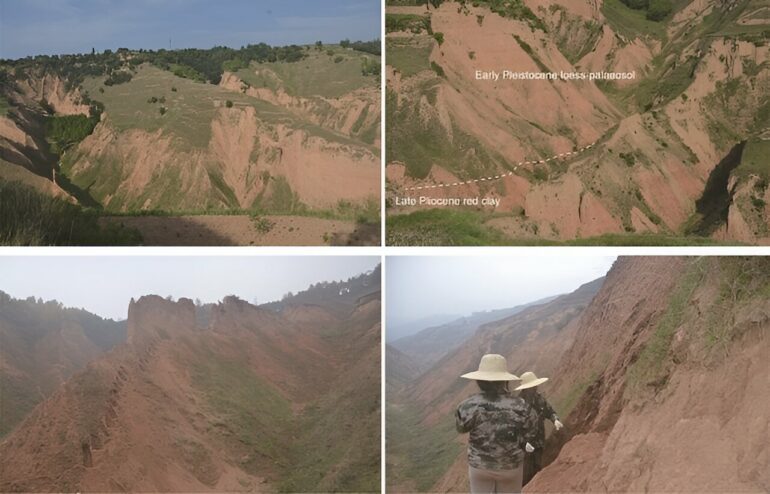In a study published in Nature Communications, researchers have documented that persistent millennial-scale Asian winter monsoon (AWM) intensity fluctuations were superimposed on 41-kyr and ~100-kyr orbital variability during both the warmer (higher CO2) late Pliocene and colder (lower CO2) early Pleistocene, in response to both external astronomical forcing and internal climate dynamics.
Led by Prof. Ao Hong from the Institute of Earth Environment of the Chinese Academy of Sciences (CAS), the researchers constructed a palaeomagnetically dated, centennial-resolution grain size record between 3.6 and 1.9 Ma from a previously undescribed Chinese loess-palaeosol/red clay section that reflects both orbital- and millennial-scale AWM variability across the intensification of Northern Hemisphere glaciation (iNHG) at about 2.7 million years ago (Ma).
The iNHG marked a major global climate transition from a relatively stable warm Pliocene state to a cooler Quaternary regime characterized by larger-amplitude orbital-scale glacial-interglacial oscillations that lasts until today.
Northwesterly advection of the cold-dry AWM from high to low latitudes, which is induced by pressure gradients between the Siberian high-pressure cell over the cold mid- to high-latitude Asian continental interior and low-pressure cells over the relatively warm Indo-Pacific Warm Pool and the northwestern Pacific Ocean, links high- and low-latitude climatic processes and has profound impacts on Asian winter climate, agriculture, and human life.
However, the features and underlying dynamics of orbital- and millennial-scale AWM variability over the iNHG remain poorly constrained due to a sparsity of well-dated, high-resolution records.
To reconstruct both orbital- and millennial-scale AWM variability between 3.6 and 1.9 Ma and across the iNHG, the researchers collected 3,571 unoriented samples for grain size measurements in the field and 251 oriented block samples for magnetostratigraphic analysis in the laboratory from a loess-palaeosol/red clay section on the central Chinese Loess Plateau.
The resulting well-dated, unprecedented centennial-resolution reconstruction suggests that the late Pliocene-early Pleistocene AWM was characterized by combined 41-kyr and ~100-kyr cycles, in response to ice volume and atmospheric CO2 forcing. Superimposed on orbital variability, millennial AWM intensity fluctuations persisted throughout the iNHG, in response to both external astronomical forcing and internal climate dynamics.
“Our high-resolution reconstruction shows, to our surprise, that millennial-scale AWM variability already existed prior to the iNHG, two million years earlier than previously recognized, with markedly different climate-cryosphere boundary conditions compared to the much higher amplitude glacial cycles that characterize the middle and late Pleistocene,” said Prof. Ao, lead author of the study.
More information:
Hong Ao et al, Orbital- and millennial-scale Asian winter monsoon variability across the Pliocene–Pleistocene glacial intensification, Nature Communications (2024). DOI: 10.1038/s41467-024-47274-9
Provided by
Chinese Academy of Sciences
Citation:
Researchers find Northern Hemisphere glaciation enhances orbital- and millennial-scale Asian winter monsoon variability (2024, May 6)


